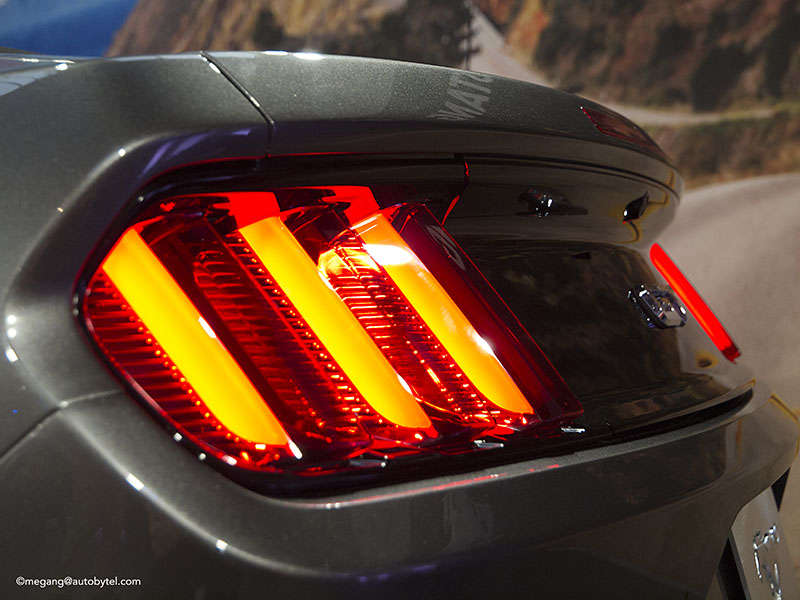Recent Articles
Popular Makes
Body Types
2015 Ford Mustang Engines and Specifications
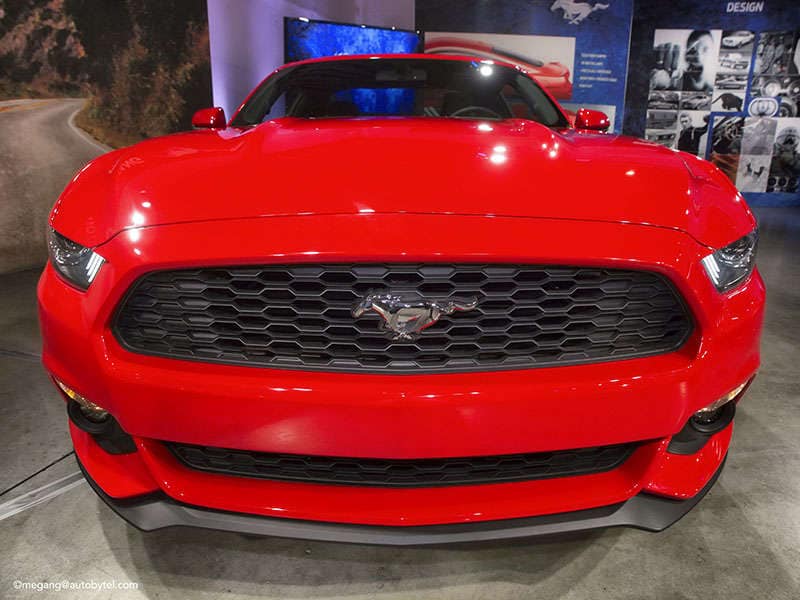
Ford has released preliminary specifications for the redesigned 2015 Mustang, which will be sold in Fastback and Convertible body styles with a choice between three different engines and two transmissions. That’s what we know now, as of the new Mustang’s global introduction on December 5, 2013. Certainly, Ford is planning a replacement for the 662-horsepower rocket that it currently calls the Shelby GT500, but for the time being any upcoming high-performance 2015 Ford Mustang model remains under wraps.
In the sections that follow, we’ll take a look at the new Mustang’s engines, specifications related to the car’s mechanical hardware, and both interior and exterior dimensions.
2015 Ford Mustang Engines and Specifications: The 3.7-liter V-6
The least expensive version of the new 2015 Mustang will come with a 3.7-liter V-6 engine that is carried over from the existing model with minor enhancements. Preliminary estimates have this V-6 delivering a minimum of 300 horsepower at 6,500 rpm and 270 lb.-ft. of torque at 4,000 rpm, slightly less than the current Mustang’s engine. However, Ford expects that when final certification is complete, the 2015 Mustang’s V-6 will actually make slightly more power and torque.
The standard transmission is a 6-speed manual gearbox. A 6-speed automatic transmission is optional, and includes paddle shifters. Naturally, both transmissions feed engine power to the Mustang’s rear wheels.
Given the car’s projected 200-pound weight loss, the new Mustang should prove quicker, more nimble, and more fuel-efficient than the vehicle it replaces. The current Mustang is rated to get 19 mpg in the city, 31 mpg on the highway, and 23 mpg in combined driving when equipped with an automatic. Ford says the new 2015 model will improve upon those numbers.

2015 Ford Mustang Engines and Specifications: The 2.3-liter EcoBoost 4-cylinder
New for the 2015 Mustang, a turbocharged 2.3-liter 4-cylinder engine serves as an upgrade from the V-6. Ford expects this EcoBoost engine option to deliver a minimum of 305 horsepower at 5,500 rpm and at least 300 lb.-ft. of torque between 2,500 rpm and 4,500 rpm. These power peaks are more favorable than the standard V-6, and because the EcoBoost engine employs a twin-scroll turbocharger, Ford claims that turbo lag is reduced compared to a conventional setup.
Ford also says that the 2.3-liter EcoBoost engine will return better fuel economy than the V-6. Do the math, and that means a city rating in a low-20s and a highway rating in the mid-30s. Plus, the EcoBoost engine puts less weight over the front wheels, which typically helps to make a car feel more responsive and less susceptible to understeer.
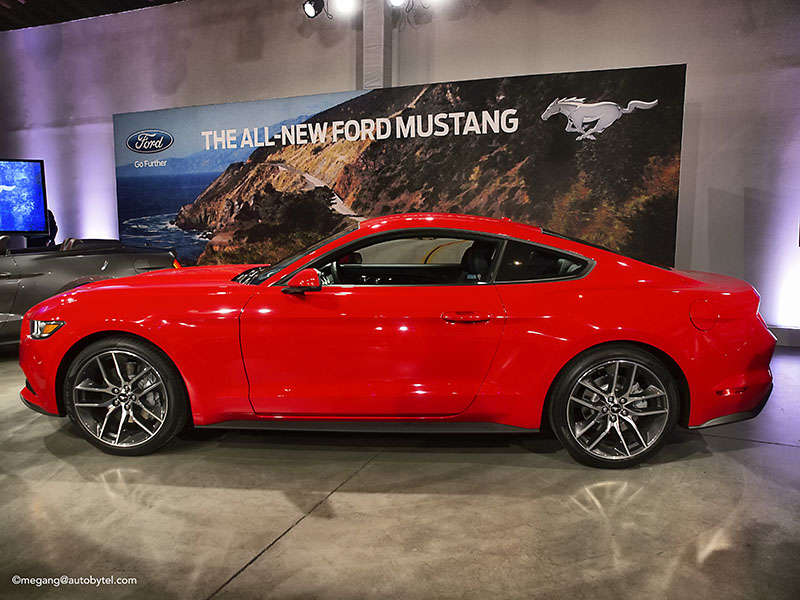
2015 Ford Mustang Engines and Specifications: The 5.0-liter V-8
Understeer isn’t the problem with the 2015 Ford Mustang GT. Rather, oversteer is the more likely dynamic delivered by this version of the new Mustang, thanks to a 5.0-liter V-8 engine preliminarily expected to generate 420 horsepower at 6,500 rpm and 390 lb.-ft. of torque at 4,250 rpm. These output figures rely upon the use of premium unleaded, but the symphony emitted from those two round exhaust pipes is worth the added expense.
As is true of the V-6 and EcoBoost engines, the Mustang GT’s 5.0-liter V-8 can be paired with a 6-speed manual or 6-speed automatic transmission, the latter featuring shift paddles.
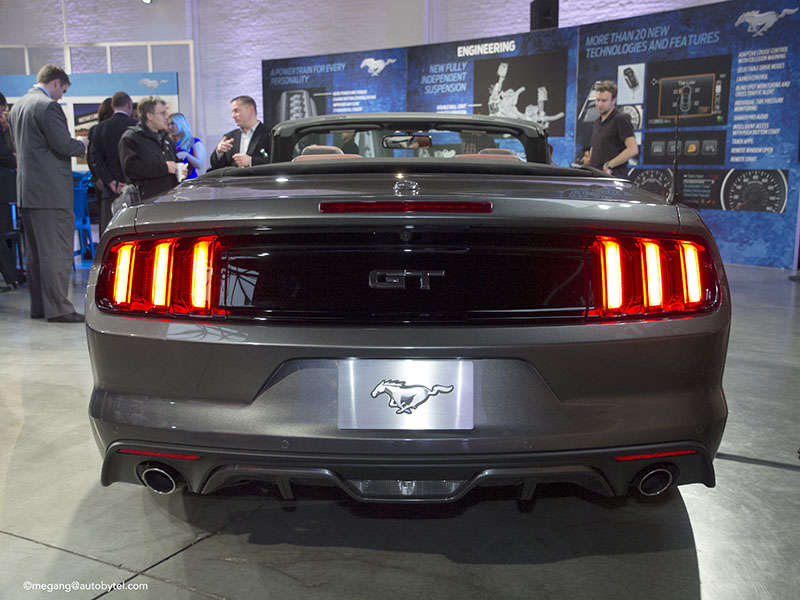
2015 Ford Mustang Engines and Specifications: The Performance Package
In conjunction with the 2.3-liter EcoBoost and the 5.0-liter V-8 engines, the 2015 Mustang can be optioned with a Performance Package. For the EcoBoost engine, this means the Mustang is equipped with a 3.55:1 final drive ratio, larger brakes with 4-piston front calipers and ventilated rear discs, and a set of 19-inch aluminum wheels wearing P255/40R19 summer performance tires.
Order the Performance Package for the Mustang GT, and the car comes with a Torsen limited-slip rear differential, more robust brakes clamped by Brembo six-piston front calipers, and staggered-width 19-inch wheels with 255/40 front and 275/40 rear summer performance tires. Combined with the new Mustang’s lighter curb weight and new driver-selected Track powertrain calibration, a Mustang GT with the Performance Package will lap a race track faster than the 2013 Mustang Boss 302.
In addition to a Performance Package, the 2015 Mustang is also available with launch control technology, a feature previously reserved for the high-powered Shelby GT500 model.
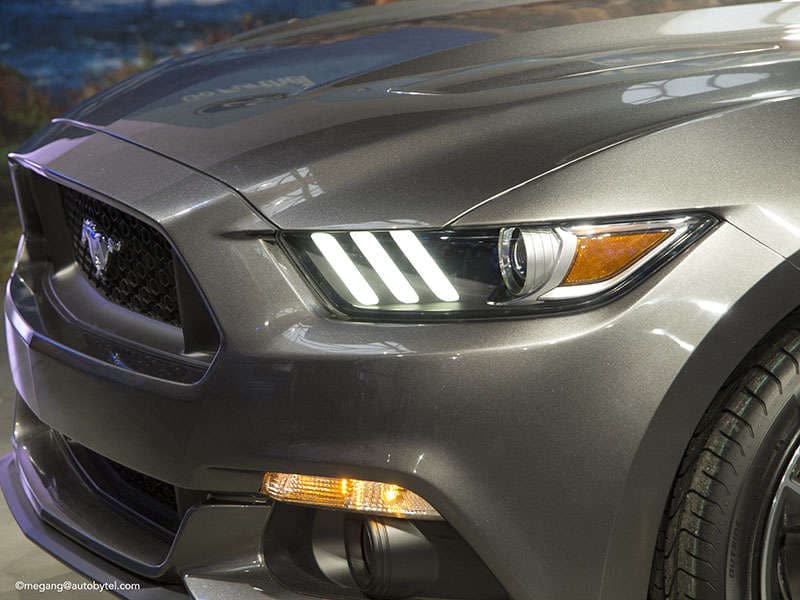
2015 Ford Mustang Engines and Specifications: Independent Rear Suspension
With the 2014 Mustang, Ford finally ditches the pony car’s traditional live rear axle setup for an independent rear suspension. This isn’t the first Mustang to be equipped with this type of suspension – a decade ago the SVT Cobra had one – but it is the first Mustang to get independently suspended rear wheels as standard equipment. Ford also installs a double-ball-joint MacPherson strut front suspension into the new Mustang.
All Mustangs also have larger braking components for 2015, as well as bigger wheels and tires. Electric power steering continues, and in the new Mustang the driver selects between Standard, Comfort, and Sport settings.
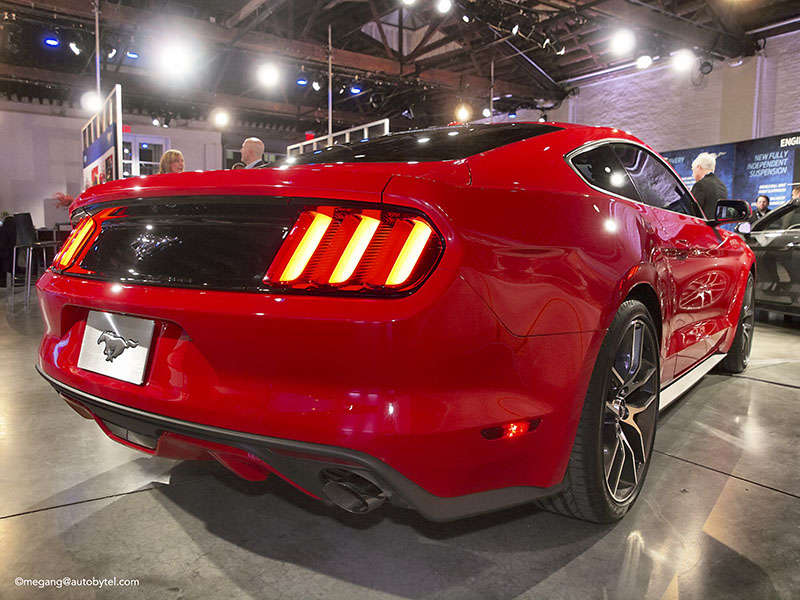
2015 Ford Mustang Engines and Specifications: Dimensions
According to Ford, the new 2015 Mustang has shed about 200 pounds compared to the model it replaces, in part due to an aluminum hood and aluminum front fenders. If you’re thinking the rest of the diet involved shrinking the car’s dimensions, guess again. The new Mustang is about the same size as the old one.
Overall length is nearly identical, the new 2015 Mustang shaving one-fifth of an inch from the previous model while riding on an identical 107.1-inch wheelbase. Bigger differences are evident in terms of height and width, the car sitting 1.4 inches lower than before while adding 1.5 inches of girth. Rear track sees a major 2.8-inch stretch, and the car’s rear decklid sits 2.75 inches lower than before, providing easier access to a trunk that measures 13.5 cu.-ft. for the Mustang Fastback and 11.4 cu.-ft. for the Mustang Convertible. Note that Ford says the Mustang Fastback now accommodates two sets of golf clubs without requiring the rear seat to be folded down.
In addition to providing greater cargo capacity than before, Ford says the new Mustang offers more interior space than the previous version, but that’s true only of the Fastback model, which gains 3.5 cu.-ft. of passenger volume. The Convertible actually shrinks a bit. In both cars, headroom is tighter by almost an inch. Otherwise, the new 2015 Mustang is larger in nearly every direction except for shoulder and hip room in the convertible’s back seat, which is actually narrower for the new model.
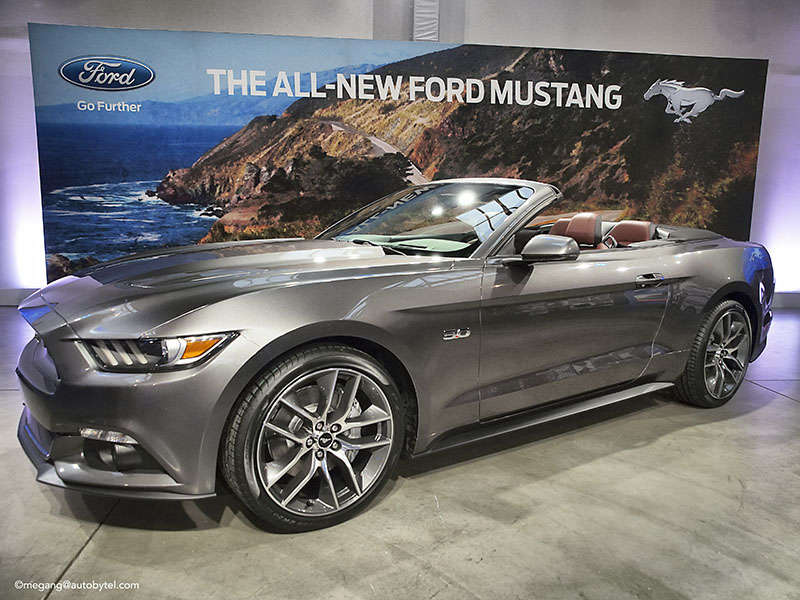
2015 Ford Mustang Engines and Specifications: Final Specs Yet to Come
Ford will build the new 2015 Ford Mustang at the automaker’s Flat Rock, Mich., assembly line and it arrives in dealerships sometime during the fourth quarter of 2014. By then, final engine specifications, fuel economy ratings, and prices for the new 2015 Mustang will be available. Based on what Ford has shared so far, though, the next-generation Mustang looks like it is improved in nearly every way.
